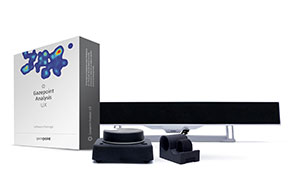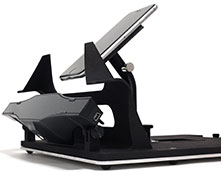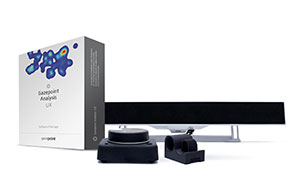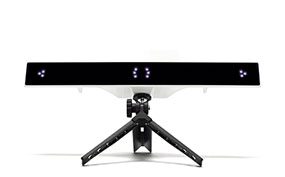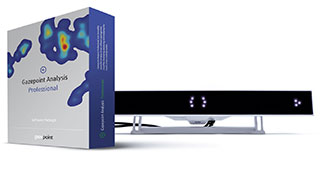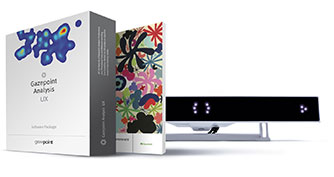Our team is focused on enabling this with the right and well-developed technology to help our clients achieve their ultimate goal.
About Us & Our Eye Trackers
For the past 10 years, Gazepoint has worked tirelessly to bring eye trackers and eye-tracking software to researchers and companies that provide us with the advancements needed for us to keep moving forward technologically.
We started Gazepoint with the aim to provide the best software and hardware for eye trackers to be able to continue the ongoing development that will result in better and friendlier user-device interactions. Our team is focused on enabling this with the right and well-developed technology to help our clients achieve their ultimate goal.
Our founders have envisioned the use of this technology on every device, vehicle, and piece of hardware that can benefit from the clean data that our devices and eye-tracking software provide to ultimately improve the human-computer interactions making the processes seamless and natural for all users.
Contact Us
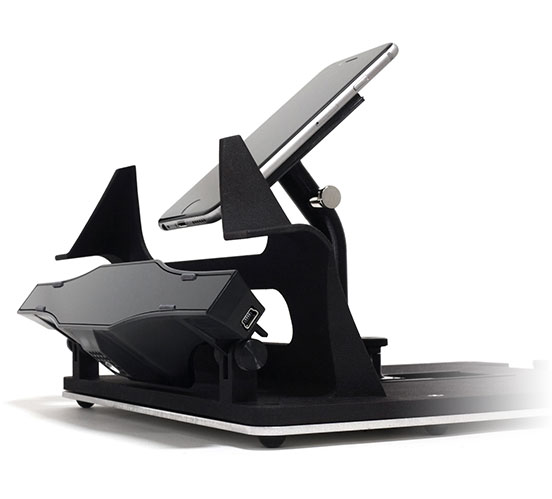
Applications for Eye Trackers
Like we said previously, eye trackers can be used for so many different purposes and have helped a number of industries and individuals acquire the information they need to help their product grow and be better.
The following industries can and have benefited from eye trackers in the past and keep doing so today:
![]()
Marketing
Marketing is a wonderful tool that many companies and organizations use to expose their brand, products, and services. The right marketing process has to satisfy, or most of the time surpass, certain standards and expectations for it to be considered effective.
With marketing being an ever-changing industry that is constantly reinventing itself with new methods and approaches, it has to rely on hard factual information that can remain as a constant, that way when the customers see what they are being exposed to, they automatically have accurate input which helps them make a decision.
The right color can differ from brand to brand and different industries. A psychological approach to content might work for a certain demographic because you are causing an emotional reaction when exposing them to what you want them to see. However, if your conversion piece is hidden in a place where your customer does not take action due to it not being an area of interest, then all your investment can go down the drain — that’s where a good eye tracker can make the difference between guiding your customers to the right place or having an uninterested passerby.
If you wish to read more about the uses of eye-tracking in marketing research and their different applications, click on the button below!
![]()
Academics
Academia is often in the search for new knowledge and corroborating the information that has been found in order to prove a hypothesis or provide a better understanding of current facts.
Eye trackers have been a big part of many new developments to help researchers understand more and more about our lives and tasks that we perform daily. Even though academic research is often sponsored by the search of knowledge instead of the need to sell a product or a service, it can greatly benefit from the use of eye-tracking systems.
One of the biggest concerns for academic researchers and their need for eye trackers is in the budget aspect. That’s why Gazepoint offers a product that’s as good and sometimes better than those commonly found as “industry-standard brands” without the overwhelming price tag. We are aware that the future lies in helping each other grow and improve, hence we came up with a product that performs beyond expectations and it’s very affordable at the same time.
Want to know more about eye tracking in the field of academic research and teaching? Click below or contact us if you have any questions.
![]()
Medical
At Gazepoint, we are fascinated by all the advances and medical uses that eye trackers can provide to an industry that requires constant improvement not only to cut costs or be more efficient but also to save more lives and diagnose problems early to better assess the health problems that plague humanity.
A wonderful example of this is the results of a 2010 study that gave promising results for using eye-tracking technology to help diagnose autism. Like this, there are other cases where eye trackers have been able to be used in different aspects of medicine to help drive the necessary research or introduce a new factor into the research itself to improve methodologies, diagnosing, and more!
Many other fields in medicine and psychology can benefit from eye trackers, whether it’s for physical eye health tests, measuring visual aspects of intentions, or searching for reactions when exposed to emotional and cognitive tasks and issues, no matter the field of study, there’s a high probability that eye-tracking can be implemented.
If you are in search of more information about how eye trackers can work in the medical field, click the button below!
There are many more industries that can benefit from eye trackers and good eye-tracking software like the one Gazepoint offers. From corporate research and development to the game industry, to virtual and augmented reality, and more, this technology has proven to be a solid addition to research and development for many industries that have seen improvement in how products are presented to customers, the way information or visuals are exposed to the public, and the importance of minute details that could not be determined by any other means.
At Gazepoint, we would love to hear from you and your interest in our eye-tracking systems. If you wish to know more about our processes, applications, prices, or any other questions you may have, please feel free to contact us and we will be happy to get back to you!
Companies Using Our Eye Trackers
Gazepoint is thankful and proud to be able to share our knowledge and our products with so many people and companies that are looking to make a difference in today’s world. We have been able to provide eye-tracking solutions to medical institutions, tech giants, transportation companies, and so many more that have seen the true value of eye trackers and the research that can be done with them. The following companies have trusted us to provide them with great eye-tracking systems at affordable prices:





What Can Eye Trackers Measure?
You might be considering using eye trackers to support research you are working on or simply want to have more factual information to improve on your designs or user interface. Eye-tracking software can be used for different research and development projects and every single one has its own approach.
Some important things that you should consider before investing in an eye tracker is the benefits it’ll yield to your research and if the equipment and software can measure the elements you are looking for.
Here are some examples of what eye trackers can measure:
Where the user has looked
Eye-tracking can determine where the user or your participant has looked during the study. This can translate into the areas of interest, which images were pulling attention, which menu items were being focused or what area of the menu was more captivating, your call-to-action items being interesting enough to help with conversion, or if there were any elements on your design that distracted the user enough to lose interest in something that was supposed to be a focal point.
The time spent on certain elements
This can also be called fixation, and it’s the measurement of the amount of time a user was focused on an element of the study. This metric can help with relevant information that catches the eyes, defining if the user is interested in something in particular, or it can help you define if there’s any aspect of your study that it’s tough to go through or hard to read.
Gaze patterns
Gaze patterns can be measured by eye trackers to determine how the user is looking at the study, how they read certain areas, elements that are revisited, and more!


Things Eye Trackers Can’t Do
Eye trackers are advanced and helpful technology, but like everything else, it has its limitations. Anything that needs to measure reasons why the user did or didn’t look at something or the sentiment behind the user’s reaction is for other departments to investigate.
Things that can’t be measured:
- Why a user is looking at certain objects or elements
- What’s the user feeling when doing the study
- Predetermine behavior, reactions, or anything that would require an in-depth psychological diagnosis
If you wish to learn more about specifics for what eye trackers can and can’t do, read our blog for interesting information or click the button below to keep reading about the subject.
Capabilities and Limitations of Eye TrackingWhat Eye-Tracking System Would You Need?
Gazepoint wants to make sure that you are buying the right system and hardware capable of satisfying your needs as a researcher, developer, or designer. You might be able to sacrifice a feature to get something that’s closer to your budget or invest a bit extra in a system that will help you in the future thanks to the extra features you may get.
Our eye-tracking devices come in different shapes and target different aspects of research. Each system has its own advantages and disadvantages and usually works well for a few industries.
Head-Mounted Eye Trackers
These types of trackers are mounted on the user and are commonly used for studies where participants need to move freely and are not confined to a desk or chair.
Screen-Based Eye Trackers
These systems are more often used for studies that require the user to be looking at a screen where the content would be displayed. The hardware for the screen-based trackers is often bigger in size, allowing the user to move naturally while sitting.
Depending on the task you have ahead, you may need to ask yourself more questions about which type of eye tracker would be the better choice for your project. We have put together some material to learn more about the different types of trackers and things you need to know before making a decision. You can also contact us if you have any questions, we’ll be happy to help!


